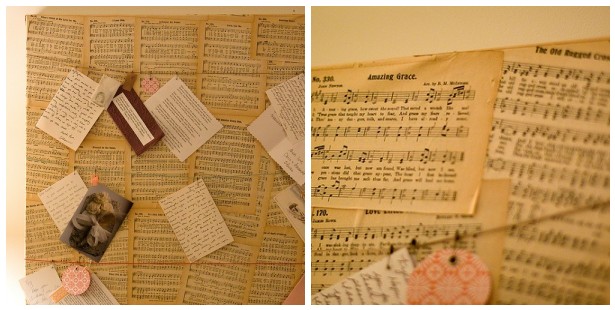 Last week I wrote Three False Reasons To Label Your Worship Song A Hymn. Now, let’s look at characteristics of a true hymn.
Last week I wrote Three False Reasons To Label Your Worship Song A Hymn. Now, let’s look at characteristics of a true hymn.
It Functions As A Poem
In Sing With Understanding: An Introduction to Christian Hymnody, Harry Eskew and Hugh T. McElrath describe a hymn as a kind of poem set to music. They further write, “It should be simple and metrical in form, genuinely emotional, poetic and literary in style, spiritual in quality, and in its ideas so direct and so immediately apparent as to unify a congregation while singing it.”
Most song lyrics are not really meant to be taken as poetry. If you read them aloud without the music, the lyrics might not seem as powerful. They were meant to be taken with music, and were likely written after or at the same time the music was composed.
Hymns are likewise meant for singing, of course, but hymn lyrics are typically crafted as poetry, independent of music (at least, this is true of the hymns of our past by hymnists like Wesley, Watts, Cowper and Newton). When you read a well-crafted hymn such as “When I Survey The Wond’rous Cross,” you will feel the cadence, even if unaware of the melody composed for it. This is why composers can keep writing new tunes for old hymn texts. It’s also why many people (particularly in ages past) would read hymnals as they would any devotional book, and even delight in the hymns they’d never heard.
Economy Of Words
What? Hymns aren’t wordy? Hymns often contain more words than contemporary popular songs, but each line is metrically precise. The hymnist establishes a “metrical contract” with worshipers in the first verse. This contract sets terms like “every line will be eight syllables long” or “lines will alternate between lengths of eight syllables and six syllables.” This is true for old hymns like “When I Survey The Wond’rous Cross” and it is true of modern hymns like “In Christ Alone” (eight syllables per line, in both hymns — we call that “long meter”).
It’s All About The Verse
While the chorus is the most important element of most contemporary songs, classic hymns did not contain choruses. Many hymnologists will say that if a song has a chorus or refrain — even if the verses are composed in hymn meter — it is a “gospel song,” not a hymn (think “Blessed Assurance”).
Is this pedantic? Maybe. Modern songwriters draw from so many influences that the lines begin to blur. Sometimes clear-cut distinctions between hymns, gospel songs, spirituals and praise and worship songs are unhelpful. But in general, a hymn tells a story or presents an argument in a series of verses, each one building on the other or continuing the narrative of the other. Because of this, hymns can cover more theological ground or present a wider narrative arc than other songs.
This doesn’t make “In Christ Alone” better than “Holy Is The Lord.” Rather, we should be thankful that we have so many different kinds of wonderful songs, like “In Christ Alone” and “Holy Is The Lord.”
Praise First, Poetry Second
We’ve already established that a hymn is a kind of poem. But the reason you can read many fantastic poems and think, “I have no idea what this is about” is because many classic and modern poets are chiefly concerned with the sound of the words or the images conveyed, rather than any specific meaning. But the hymnist William Cowper said of his hymn-writing:
“I always write as smoothly as I can, but that I never did, never will, sacrifice the spirit or sense of a passage to the sound of it.”
A hymnist writes in such a way that all worshipers can understand and sing along, regardless of their level of education or their experience with literature and poetry. The hymnist’s goal is the same goal of any true writer of songs for God and His Church: to give worshipers a language for thankfully praising our Lord and for speaking His truth to each other.
Photo above by Kylene Lynn, used via Creative Commons license
{ 1 comment }
Wait if a hymn can’t have a refrain does that mean ‘How great thou art’ is not a hymn but rather a Gospel song????
{ 2 trackbacks }